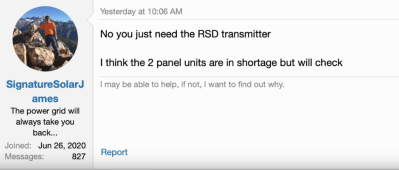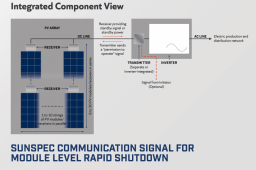Watts Happening
I call it like I see it.
- Joined
- May 3, 2022
- Messages
- 802
I’ve purchased and am waiting to receive my 18Kpv with great anticipation. That said, I’m struggling with parts of the manual that feel, “less than adequate”. If it’s my lack of understanding the product, I accept that.
In this case I’m referring to page 56 of the manual that covers rapid shutdown, which as most know is now required at the panel level of any building mounted install in the US.
After scratching my head, I reached out to @SignatureSolarJames and was told the Tigo system is the way to go. Which seems to mimic the fact that Signature Solar sells Tigo devices.
That said, the manual sure seems to suggest that the inverter has some form of rapid shutdown transmitter that will initiate a shutdown of the panels. How it does this, I have no idea. What device exists on the other end to initiate/cut off production, no clue? What type of switch, unknown? Does the remote switch override the local switch? Does it turn off both PV and AC power?
I’d love to get some clarification from members whom have actually installed this unit and received a permit, as well as Signature Solar as I think this is a rather important aspect of installations. Rapid shutoff at the inverter is one thing, and is useful, but we’re forced to comply with NEC and thus I hope to ensure everyone understands this topic in its entirety.
In this case I’m referring to page 56 of the manual that covers rapid shutdown, which as most know is now required at the panel level of any building mounted install in the US.
After scratching my head, I reached out to @SignatureSolarJames and was told the Tigo system is the way to go. Which seems to mimic the fact that Signature Solar sells Tigo devices.
That said, the manual sure seems to suggest that the inverter has some form of rapid shutdown transmitter that will initiate a shutdown of the panels. How it does this, I have no idea. What device exists on the other end to initiate/cut off production, no clue? What type of switch, unknown? Does the remote switch override the local switch? Does it turn off both PV and AC power?
I’d love to get some clarification from members whom have actually installed this unit and received a permit, as well as Signature Solar as I think this is a rather important aspect of installations. Rapid shutoff at the inverter is one thing, and is useful, but we’re forced to comply with NEC and thus I hope to ensure everyone understands this topic in its entirety.









